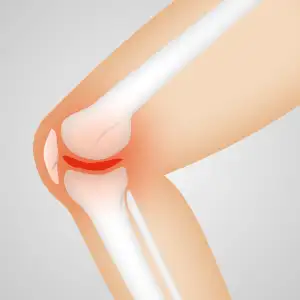Combat Traveling Body Pain: Tips to Stay Comfortable on the Go

Traveling, whether by plane, train, car, or bus, can often lead to discomfort and body pain for many individuals. Long hours spent sitting in cramped spaces, lack of movement, improper posture, and carrying heavy luggage are just a few factors that contribute to this issue. The impact of traveling body pain can range from mild stiffness and soreness to more severe conditions like muscle strains or joint inflammation. It is essential for travelers to be aware of these potential challenges and take proactive steps to prevent and manage them effectively during their journeys.
Common Causes of Body Pain While Traveling
Traveling often involves long periods of sitting or standing in cramped spaces, leading to poor circulation and muscle stiffness. The lack of movement can result in muscle tension, especially in the neck, shoulders, and lower back. Carrying heavy luggage or improper lifting techniques can strain muscles and cause discomfort. Additionally, uncomfortable seating positions on planes, trains, or buses can lead to poor posture and back pain. Dehydration from limited access to water during travel can also contribute to muscle cramps and overall body discomfort.
Tips to Prevent Body Pain During Travel
**Tips to Prevent Body Pain During Travel:**
1. **Stay Hydrated:** Dehydration can exacerbate muscle stiffness and discomfort during travel. Drink plenty of water before, during, and after your journey.
2. **Move Regularly:** Avoid sitting in the same position for long periods. Take breaks to stretch your legs, walk around the cabin, or do simple exercises in your seat.
3. **Pack Light:** Heavy bags can strain your muscles and joints. Pack only essential items and use luggage with wheels to minimize physical strain.
4. **Use Supportive Accessories:** Invest in a supportive travel pillow or cushion for your neck and lower back to maintain proper posture while seated.
5. **Adjust Your Seat:** If possible, adjust your seat position to support your back and neck comfortably. Use lumbar support if needed.
6. **Practice Good Posture:** Sit up straight with your shoulders relaxed and aligned with your hips. Avoid slouching to prevent back pain.
7. **Choose Comfortable Clothing:** Wear loose-fitting, breathable clothing and comfortable shoes to reduce constriction and improve circulation.
By incorporating these tips into your travel routine, you can significantly reduce the risk of experiencing body pain during long journeys or extended periods of sitting.
Exercises and Stretches for Relieving Travel-Related Body Pain
1. Neck Rolls: Slowly roll your head in a circular motion, first clockwise and then counterclockwise, to release tension in the neck and shoulders.
2. Shoulder Shrugs: Lift your shoulders towards your ears, hold for a few seconds, then relax them down. Repeat this movement several times to alleviate shoulder stiffness.
3. Seated Spinal Twist: Sit up straight, twist your torso to one side while holding onto the seat with both hands for support. Hold the stretch for 15-30 seconds on each side.
4. Ankle Circles: Rotate your ankles in a circular motion to improve circulation and reduce swelling from prolonged sitting during travel.
5. Standing Forward Bend: Stand up straight, hinge at the hips, and bend forward reaching towards your toes or the floor to stretch out your hamstrings and lower back.
Incorporating these exercises and stretches into your travel routine can help alleviate discomfort and prevent body pain associated with long journeys.
Importance of Proper Posture and Ergonomics While Traveling
Maintaining proper posture and ergonomics while traveling is crucial in preventing body pain. Sitting for extended periods in cramped spaces can lead to muscle stiffness and discomfort. Ensure your seat provides adequate lumbar support to keep your spine aligned. Adjust the headrest to support your neck and avoid slouching. Additionally, use a cushion or rolled-up towel to support your lower back if needed. Avoid crossing your legs for prolonged periods as it can affect blood circulation. Remember to take breaks to stretch and walk around during long journeys to relieve tension in muscles and joints. By prioritizing good posture and ergonomics, you can significantly reduce the risk of experiencing travel-related body pain.
Seeking Medical Help for Persistent Travel-Induced Body Pain
Seeking medical help for persistent travel-induced body pain is crucial to address underlying issues. If the pain persists despite trying preventive measures, it's advisable to consult a healthcare professional. They can conduct a thorough assessment to determine the cause of the pain and recommend appropriate treatment options. Ignoring persistent pain can lead to long-term health issues, so seeking timely medical intervention is essential for managing travel-related body discomfort effectively.
In conclusion, it is essential to prioritize your comfort and well-being while traveling to prevent body pain. By understanding the common causes of discomfort during travel and implementing simple tips like staying hydrated, moving regularly, and practicing proper posture, you can significantly reduce the risk of experiencing travel-induced body pain. Incorporating exercises and stretches into your routine can further alleviate any existing discomfort. Remember that seeking medical help for persistent pain is crucial to address any underlying issues effectively. By taking proactive steps and being mindful of your body's needs, you can enjoy a more comfortable and pain-free travel experience.
Published: 14. 03. 2024
Category: Health



